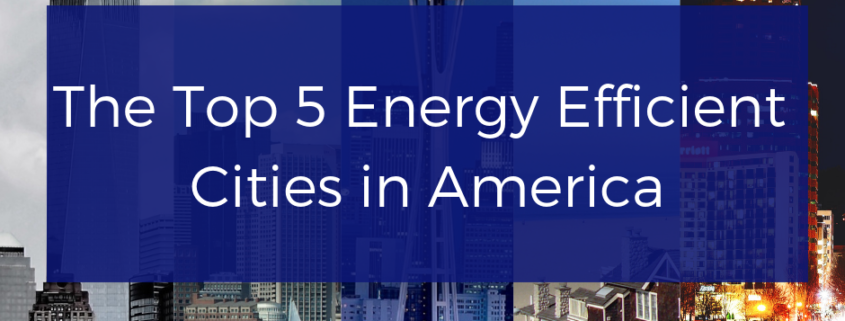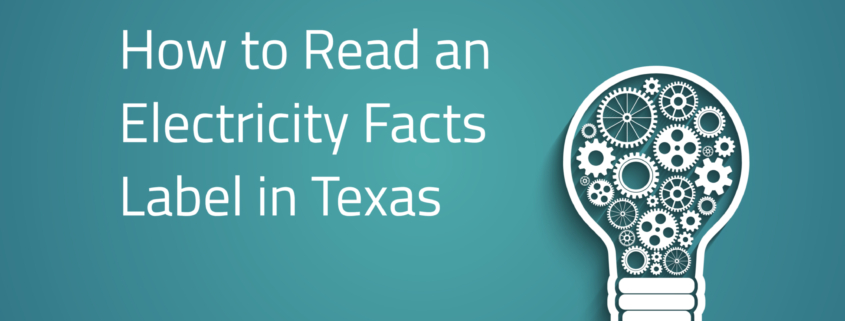Last Updated on March 28, 2022 by Mary Pressler
The Top 5 Energy Efficient Cities in America
Energy efficient technologies are among the best upgrades available for property owners, reducing the operating cost and environmental impact of buildings. When energy efficiency measures are deployed with professional assistance, their payback period is only a fraction of their service life, and each dollar spent upfront is recovered multiple times.
Although energy efficiency is a great investment by itself, municipal governments play a fundamental role in making cities greener. There are three main approaches, which are often deployed together:
- Introducing legislation that requires a minimum energy efficiency for all buildings, especially those under municipal ownership. Cities can also enact laws that establish emission reduction or net-zero targets for buildings.
- Creating incentive programs to reward buildings that exceed certain efficiency metrics.
- Direct investment to improve the efficiency of public infrastructure.
Various organizations have ranked US cities based on their energy efficiency. Two of the most prestigious energy rankings are the ENERGY STAR Top Cities and the ACEEE City Energy Efficiency Scorecard.
ENERGY STAR is an energy efficiency program from the US Environmental Protection Agency, which has saved over $450 billion in energy expenses since 1992. ACEEE stands for American Council for an Energy-Efficiency Economy, an organization that drives energy efficiency through policy analysis, research and public outreach.
Top 5 Cities in the ACEEE Scorecard
The ACEEE Scorecard considers five main categories to assess the energy efficiency of cities. Each category has a maximum score, and the total score can reach a maximum value of 100.
| ACEEE Scorecard Category | Maximum Score | Highest Score in 2020 Scorecard |
| Local Government Operations | 10 | 8/10 (Austin and Boston) |
| Community-Wide Initiatives | 15 | 11.5/15 (Washington DC) |
| Buildings Policies | 30 | 28.5/30 (New York) |
| Energy & Water Utilities | 15 | 13.5/15 (Boston, Chula Vista, Minneapolis, San Diego) |
| Transportation | 30 | 25.5/30 (San Francisco) |
This section provides an overview of the top five cities with the highest energy efficiency scores in the 2020 ACEEE ranking. Since cities are scored every two years, the next ranking can be expected by 2022.
1) New York – 77.5 / 100
New York City currently holds the top spot in the ACEEE ranking, 4.5 points above the second place. The city has been characterized by its energy leadership, with demanding construction codes and incentive programs for those who exceed their requirements. The following are some of the main programs that have turned New York into a green city:
- NYC enacted Local Law 97 of 2019, which mandates emission reductions for all buildings with a floor area over 25,000 sq.ft. Starting from 2024, this law will apply hefty fines for building owners who are still above their respective limit.
- NYC has also set the goal of reaching net-zero greenhouse gas emissions by 2050.
- The Greener, Greater Buildings Plan (GGBP) is a set of laws published in 2009, which introduced stringent energy requirements for buildings. Among them is the NYC Energy Conservation Code, which is updated every three years. The GGBP also includes an energy benchmarking law for buildings, and mandatory energy audits and commissioning at established intervals.
- Since 2020, all buildings with at least 25,000 sq.ft. are required to display their ENERGY STAR score and energy grade in a location visible to the public.
- Consolidated Edison, the power company serving NYC, manages a large incentive program for customers who deploy energy efficiency measures. Small upgrades like LED lighting and smart thermostats are given away for free in some cases.
The 77.5 score achieved by New York is broken down as follows:
- Local government operations: 6.5 / 10
- Community-wide initiatives: 8 / 15
- Buildings policies: 28.5 / 30
- Energy and water utilities: 10.5 / 15
- Transportation policies: 24 / 30
2) Boston (Tied) – 73 / 100
The next four cities in the ranking are evenly matched in terms of energy efficiency. Boston and Seattle are tied in 2nd place with a score of 73, while Minneapolis and San Francisco are tied in 3rd place with a score of 72.5.
Boston had been on top of the ACEEE Scorecard for several years, but now NYC has taken the lead. However, Boston remains one of America’s most energy efficient cities. The following are some measures and initiatives that have allowed this:
- The Massachusetts Stretch Energy Code is one of the most demanding in America, and it has helped Boston become an efficient city.
- Local energy companies have invested in electricity and natural gas efficiency programs, which have included offerings for multifamily buildings and the low-income sector.
- Boston is also working to increase its share of renewable generation connected to the power grid.
- Boston also benefits from the statewide SMART program, which provides performance-based payments for solar power systems.
- The city has a Climate Action Plan, which achieved a 25% emissions reduction by 2020, and there is now a more ambitious target of 80% by 2050 (using 2005 as a baseline).
- Boston has an energy disclosure ordinance, which has required annual consumption reports. In October 2021 the city signed a more demanding ordinance, which establishes emissions targets and reporting for buildings having an area of 20,000 sq.ft or more.
- All new municipal buildings in Boston must achieve LEED Silver certification from the US Green Building Council.
The 73 score achieved by Boston is broken down as follows:
- Local government operations: 8 / 10
- Community-wide initiatives: 8.5 / 15
- Buildings policies: 20.5 / 30
- Energy and water utilities: 13.5 / 15
- Transportation policies: 22.5 / 30
2) Seattle (Tied) – 73 / 100
Seattle was tied with Boston in the 2020 edition of the ACEEE scorecard, where both cities had a score of 73. The following are some areas where Seattle has excelled in terms of energy efficiency and emissions reduction:
- The Seattle Energy Code has demanding requirements for buildings, and it is strictly enforced by the city. The code is more demanding than ASHRAE 90.1.
- Seattle has a benchmarking and transparency ordinance, and a tune-up policy that requires periodic upgrades for buildings over 50,000 sq.ft. The city also proposed a statewide performance standard for commercial buildings, which has been approved and implemented.
- Seattle City Light, the local power company, has a weatherization program for low-income households and an incentive program for multifamily buildings.
- Seattle City Light also generates 94% of its power from carbon-neutral sources, mostly hydroelectricity. The company manages five community solar projects, and a microgrid that combines solar power and energy storage for a community center.
- All commercial and multifamily buildings in Seattle must use renewable energy or they must be solar-ready. When this is not feasible, they must compensate by achieving a higher level of energy efficiency above code requirements.
- The city has also introduced EV charging requirements for residential and commercial buildings.
The 73 score achieved by Seattle is broken down as follows:
- Local government operations: 6.5 / 10
- Community-wide initiatives: 9.5 / 15
- Buildings policies: 22.5 / 30
- Energy and water utilities: 11.5 / 15
- Transportation policies: 23 / 30
3) Minneapolis (Tied) – 72.5 / 100
Minneapolis has been among the five most efficient cities in two consecutive editions of the ACEEE scorecard. The city has been improving its policies in recent years, and the following are some examples:
- The Commercial Building Energy Benchmarking and Transparency Ordinance, which now requires disclosure for residential properties that are being rented or sold.
- Xcel Energy and CenterPoint Energy, the two largest utilities in the city, both have energy incentive programs for low-income consumers.
- Minneapolis has a Climate Action Plan, and the city is on track to achieve a 30% reduction of GHG emissions by 2025.
- The city created the Green Zones Initiative, which focuses on communities that suffer a disproportionate impact from climate change and environmental pollution.
- Minneapolis is also working on several community solar projects, district energy systems, and microgrid projects.
The 72.5 score achieved by Minneapolis is broken down as follows:
- Local government operations: 7 / 10
- Community-wide initiatives: 11 / 15
- Buildings policies: 18.5 / 30
- Energy and water utilities: 13.5 / 15
- Transportation policies: 22.5 / 30
3) San Francisco (Tied) – 72.5 / 100
San Francisco was tied with Minneapolis in the 2020 ACEEE Scorecard, and the city has excelled in transportation policies. The following are some of the factors that have helped the city rank among the most efficient in America:
- San Francisco has been working to create mixed-use communities that reduce travel distances, while reducing the need for parking space.
- The city is also improving its transportation efficiency with its master plan, ensuring that housing stock is concentrated around transportation hubs.
- The California Building Energy Standards are very demanding, and San Francisco makes sure they are followed. The city has also introduced policies for existing buildings.
- Downtown San Francisco has a car-free zone, with the goal of encouraging public transportation and biking.
- There are peak hour traffic restrictions, which move delivery traffic to off-peak hours.
The 72.5 score achieved by San Francisco is broken down as follows:
- Local government operations: 7.5 / 10
- Community-wide initiatives: 7.5 / 15
- Buildings policies: 19.5 / 30
- Energy and water utilities: 12.5 / 15
- Transportation policies: 25.5 / 30
Top 5 ENERGY STAR Cities
The US EPA ranks energy efficient cities based on the number of ENERGY STAR Certified buildings. The ranking is published annually, and the following table lists the top 5 cities for 2021:
| # | City | Certified Buildings | Certified Floor Area (million sq.ft.) | Emissions Avoided (metric tons CO2-equivalent) | Savings (USD million) |
| 1 | Los Angeles | 587 | 140.5 | 307,000 | $203 |
| 2 | Washington, DC | 549 | 147.5 | 537,000 | $157 |
| 3 | San Francisco | 341 | 95.6 | 263,000 | $203 |
| 4 | Atlanta | 329 | 84.2 | 321,000 | $64 |
| 5 | New York | 276 | 142.2 | 403,000 | $157 |
The ENERGY STAR ranking is different from the ACEEE ranking because it only focuses on building performance, not the overall city performance. New York and San Francisco are the only two cities with top 5 spots in the two rankings.
Conclusion
Government commitment with energy efficiency and emissions reduction is among the key factors that makes cities greener in the US. The top cities in the ACEEE ranking are characterized by demanding energy codes for buildings, combined with community-wide initiatives to promote energy efficiency and renewable sources.
ENERGY STAR certification is less dependent on city policies, since it is managed at the federal level by the US Environmental Protection Agency. An ENERGY STAR Certified building outperforms 75% of buildings of the same type, while achieving a significant reduction of energy costs and greenhouse gas emissions.
Before you leave… find more about energy efficiency, solar news, United States energy deregulation and Texas electricity on the Quick Electricity Blog.




